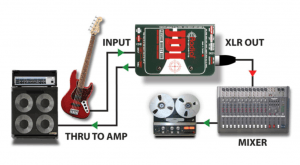Throughout the mixing process for the song ‘Lonely Boy’ by ‘The Black Keys’, I have made various creative decisions and changes from the original raw mix, as to how I wish to mould the song into the final piece. This involved many choices in terms of balancing, dynamic range of certain tracks and even alteration of overall ambience (e.g. reverbs). These choices were made based on personal preference and how I believe the mix should evolve. For example, I enjoyed the harmonic on the acoustic track whilst recording it and felt this acted as a good opener to the song, therefore I included it, which I have also done with the introductory drum clicks.
The balancing of the song took a great deal of my focus, as I felt without a good early understanding of how the mix would end up, then the track may fall apart. My mix centres heavily extenuating the bass so it cuts through the mix, as I feel this acts as a spine to the constant drive as the song progresses. I was also impressed with the sound output of the acoustic guitars and have kept them as a powerful undercurrent to the song. Yet in saying this, I have definitely attempted to place emphasis on the lead guitar riff whenever it is played during the beginning of the song or towards the final chorus. I feel the vocal needed to be clearly referenced throughout the track and so have made sure this is clearly heard at all sections. Arguably I attempted to be quite conservative with my drum volume, but as the mixing process continued I tried to make sure they could be clearly heard.
I have used multiple alterations to the dynamic range of certain instruments, using an insert compressor on the ‘High-Hats’ track and a compressor send on both ‘Overhead’ tracks. This was mainly done to reduce the dynamic range of the ‘High-Hats’ on both tracks. I enjoyed the power they brought to the song in the final chorus, but they were too overwhelming, so I’ve attempted to bring them back into the mix further.
I have also used a reverb send on both the ‘Backing VOX’ track and the main ‘VOX’ track to create the sense of further depth to their environment whilst they sing, as opposed to a dead clean sound. I thought that in adding reverb, the tone of the track would mesh better with the overall sound of the piece. Whilst editing the vocals, however, I did decide to take out the second ‘Backing VOX’ track that was recorded in the dead room, as I felt it added little to the mix in general. This was due to the vocalist singing exactly what the lead VOX was singing. This did, when turned up massively, brought a ‘gang vocal’ feel to the song, but this wasn’t effective in the mix, and so I decided to delete it.
